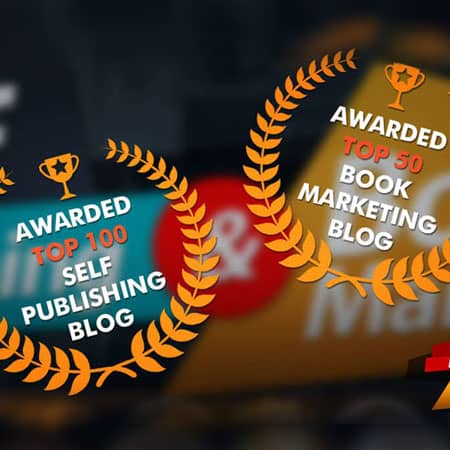
Sandra Wendel - February 2, 2021 - 
Why First-Time Authors Need an Editor!
I’ve seen it all. A manuscript of 60,000 words and just one paragraph. A hodgepodge of dialogue smooshed together with no quotation marks. Misspellings and misuses (the easy words such as affect and effect but also Idlewild Airport, not Idylwild), wrong facts (no, the detective couldn’t have an iPhone in 1980), overcapitalization, excessive use of italics and boldface, and just plain poor writing.
That’s what keeps us editors in business.
We’re the last safety net for authors before their work meets the harsh glare of publication and critical readers.
You’ve seen the one-star Amazon reviews with criticism such as “needs an editor” or “I put this book down because of all the misspellings” or “simply unreadable, a waste of time and money.”
Happily, I’ve had the privilege of assisting hundreds of the first-time authors in editing their books and bringing a level of professionalism to their words and paragraphs, chapters, parts, sections, and masterpieces.
The Missing Step
Somewhere in the writing process, from writing to publishing, the editing step has often been lost or bushwhacked (gotta love that word; I found it by right clicking on the word I originally used, waylaid, in Word and clicking synonyms).
I liken the editing process to a dry cleaner. We editors find those mustard stains on your tie or blobs of spaghetti sauce on the pants and scrub them away so nothing tarnishes the overall look or distracts from the message. A savvy editor takes a 30,000-foot view of the entirety of the work and then zooms in at the word and sentence level.
We editors aren’t critical. We’re here to help. I’m not sure why authors need to be convinced that their work requires a professional edit at the right time and at the appropriate level (from prettying up punctuation to wholesale revamping and reorganizing)—to create a final document ready for book production.
But let me speculate why the first-time authors overlook this step in the publication process:
Ego: Some first-time authors feel their work is just fine. Perfect, in fact. Don’t touch it. I’ve never had a perfect manuscript, so when you find that one, I’d like to see it. A savvy editor preserves the author’s voice but works behind the scenes to make it even stronger.
Budget: Many first-time authors say they have a limited budget, and the editing step is the one to get cut or restricted. So who’s not on a limited budget? If you are going to self-publish your book, set aside funds to pay for the professional services that will make your work the best it can be. Editing and cover design are right at the top of that list. You have spent too much time and blood, sweat, and fears in creating your book. Why not take it that last mile with a professional edit?
DIY: “I can do this myself,” say authors. By reading their work over and over or even backward or out loud to the cat, they feel they have caught any typos or problems. Do-it-yourself self-editors are kidding themselves. Our brains are wired to overlook our own errors, time and again. And what you may think is correct when you read it for the fourteenth time could clearly be incorrect. In fact, those overlooked blunders have a habit of jumping out at you once you’ve published (we all make those errors in our emails and texts, am I right?). Readers are not forgiving. Once you’re in print, fixing the errors becomes a costly time and money issue.
Beta readers: “My early readers will catch any errors and let me know.” I’ve heard that one too. Your early readers are likely to be people you know. They will love your work and tell you so. They are not book editors. And they won’t want to hurt your feelings if they think your plot is thin or characters shallow. They may not even know how to provide helpful feedback. Crowdsourcing an edit is a particularly bad idea.
Friends: Your mother-in-law who reads romance novels by the bucketful is not the editor for your book, even if she did teach English Literature. And especially if your book is a business book on leadership and out of her orbit. Likewise, coworkers and Facebook friends aren’t editors either. The best feedback can come from people who don’t know you, who fit within your target reader category (“everyone” is not your target reader), and who are asked specific questions about your book. But those are comments you solicit on content, not about the finer points of comma usage, semicolons, and em dashes.
What Editors Do
We are the English teacher you hated in high school, but we don’t grade you, we don’t hold up your graduation, and we don’t make you stay after school. We don’t make you diagram sentences or quiz you on the difference between a participle and a gerund.
Mechanically, we do fix errors in word choice and punctuation, spelling and grammar, and impose a style for capitalization and hyphenation using the Chicago Manual of Style (the book industry standard).
We don’t mark in the margin in red pencil. Instead, we use the Track Changes feature in Word and leave you notes in the margin using the Comment feature. You can see all our changes and suggestions in a different color, and we can go back and forth with your manuscript, having an entire conversation in the margin about content issues, organization, point of view, character development, questions about flow, length, and tone.
In marginal notes, I have left comments such as this:
- You repeated this point in the previous chapter, do you want to keep this or delete here?
- What if we revise this sentence to avoid starting with There are. Instead of There are a number of trainers who use this technique. Better wording: A number of trainers use this technique.
- Love this part. It would be stronger if you could give an example to hammer home the point.
- You’ve been overusing the word things, which is a weak word. How about we use the word tasks here?
We make the changes in a process that is often called copy editing or line editing. But no matter what the process is called, we fix and tinker, fine-tune, look up words in the dictionary to get the hyphenation correct, consult our style guide, perform Google searches to check facts and dates and spellings, and suggest stronger words or reword sentences to avoid unclear antecedents.
The Final Product
Our goal—after one or two major rounds of editing, maybe even more—is to have helped you create a polished manuscript ready for production (meaning you move into the stages of working with a book cover designer and interior designer and explore your publishing options on Amazon’s KDP and IngramSpark).
The cleaner your manuscript is going into production, obviously, the finer the product along the way and the more pristine the final book will be. Then you won’t be horrified to find glaring typos (yes, you may find a few because no one is perfect) when the first sacred copy your self-published paperback arrives in the mail.
Once you have gone through an editing process and worked with a professional book editor who has experience in your genre, you will understand why you needed an editor in the first place.
As one of my first-time authors said, “You saved me from publishing a book filled with error. I am truly grateful. I would have been so embarrassed.” Another said, “You pushed me to write a better book.”
Did you spot the typos in this blog? I rest my case.
If you liked this article you might also like:
Difference Between Proofreading and Copy Editing
Never Judge a Book By Its Cover! – Are You Really Sure?


